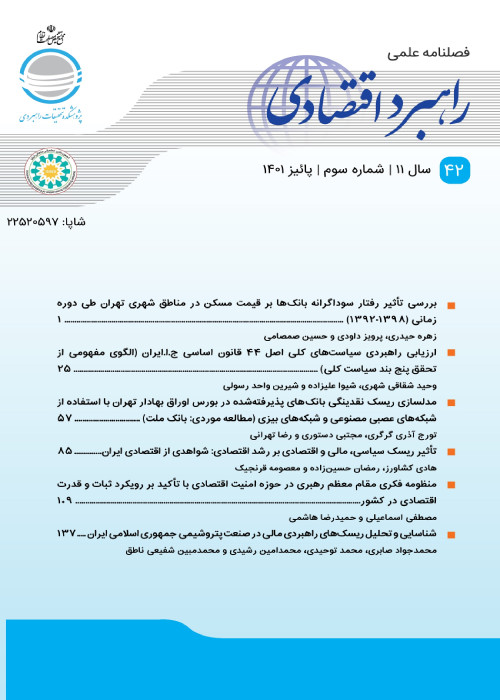Evaluating fair development in Iran's economywith the approach of multi-dimensional indicators (multi-dimensional poverty and the combined index of justice)
7 decades of development history after the Second World War have been associated with the evolution of the concept of development. Perhaps the most important change in the concept of development is the change from the concept of economic growth to a structural and qualitative change that improves the income and non-income aspects of well-being, and has stability and fair distribution. In order to evaluate fair development in Iran's economy, multi-dimensional indicators have been used. The results of the surveys show that the trend of the multidimensional poverty index in rural areas during the years under review was a decrease, which means that the extent and severity of multidimensional poverty decreased during the years under study in rural areas. Regarding the urban areas, this index has a fluctuating trend, but since 2007, the average trend of this index has been upward, which can be caused by high inflation, recession and the occurrence of sanctions. On the other hand, the calculation of the composite European social justice index shows that the index faced an upward trend between 2001 and 2019, and finally the total score reached 7.32 in 1398 from about 4.72 in 1380. Although the trend of this index shows the improvement of the social justice composition index in Iran, the downward trend in the labor market and the social sectors of health and intergenerational justice seems worrying.
-
Pareto Equilibrium and Optimal Loss Function for Monetary and Fiscal Policymakers in a Cooperative Game, Considering Government Uncertainty in Achieving Budget Revenue
*, Davoud Foroutannia
Journal of Economic Research, -
An analysis of Nash, Berge, and Greedy equilibrium in the context of a mixed game involving monetary and financial policymakers in normal form: An application of the prisoner’s dilemma
*, Davoud Foroutannia
Journal of Economic Policy,



